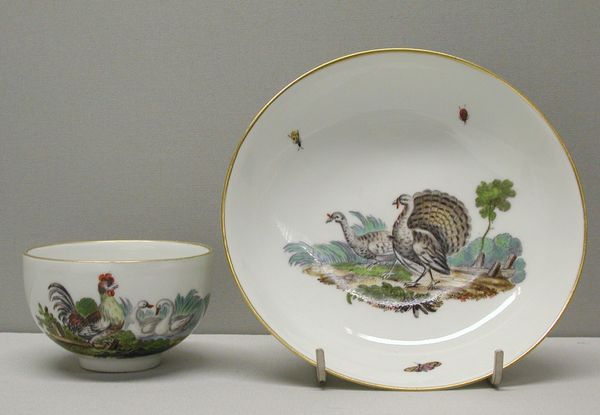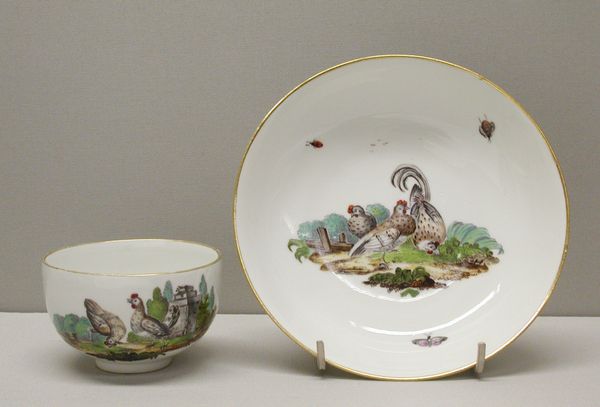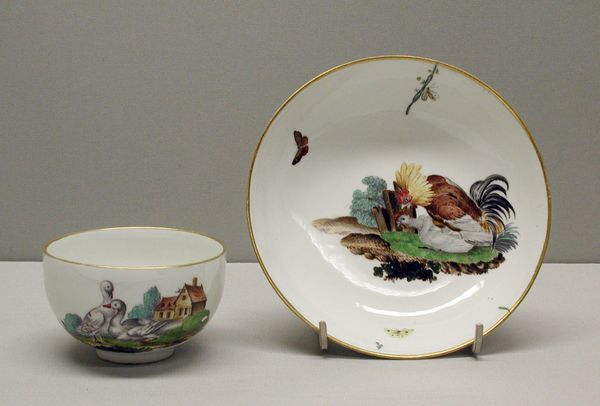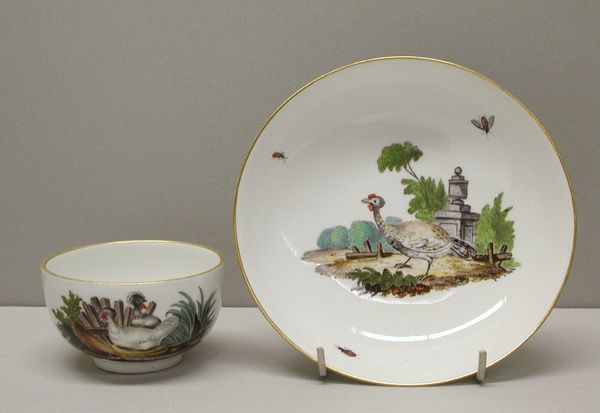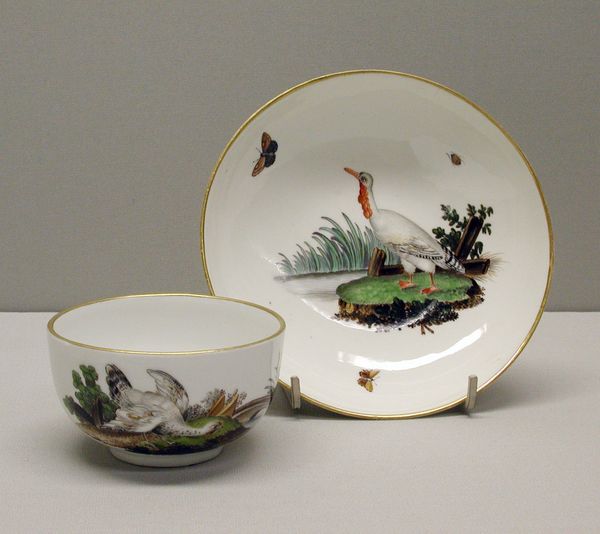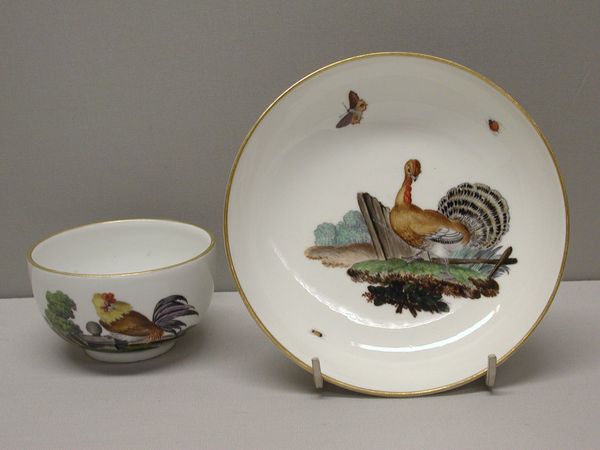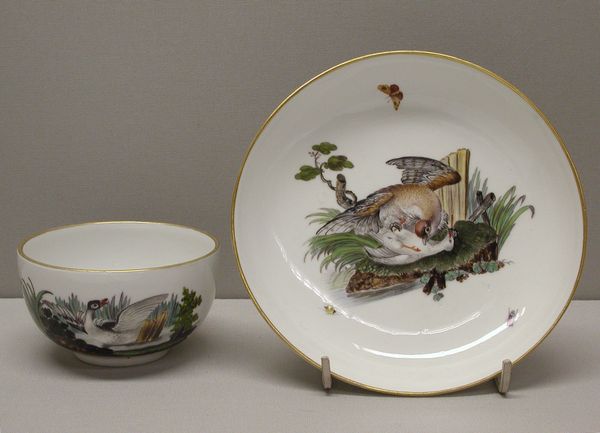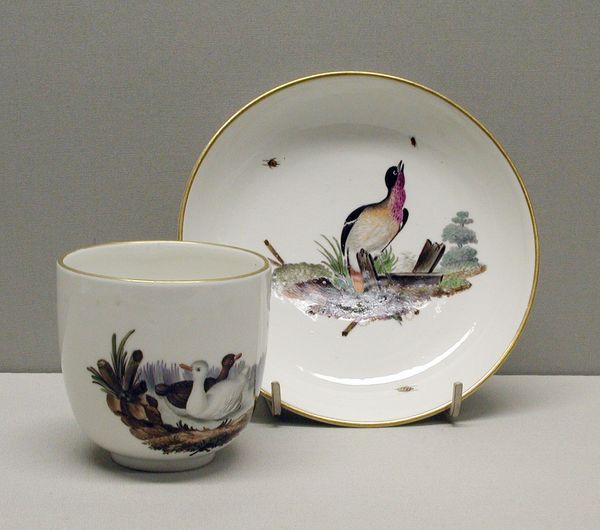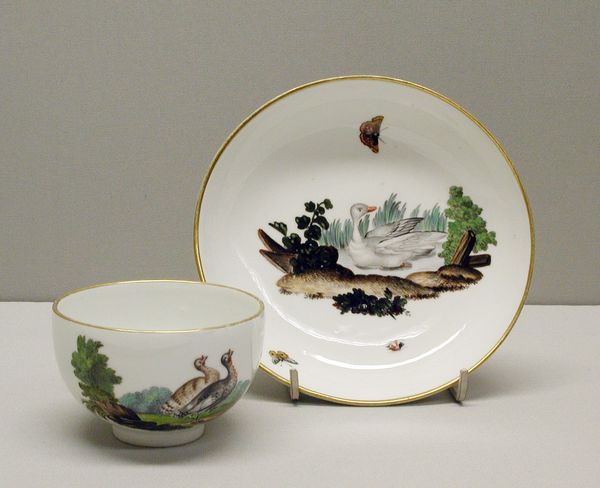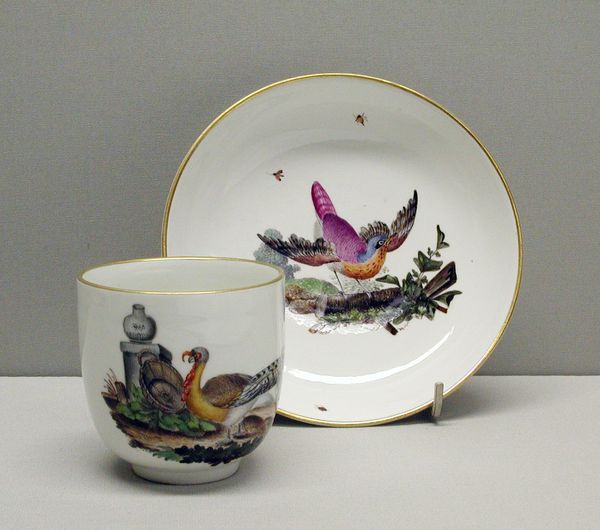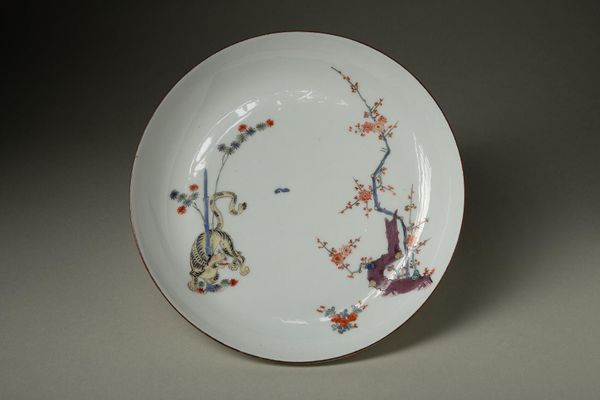
Dimensions: Diameter, saucer: 5 1/2 in. (14 cm) Overall, cup: 1 5/8 x 3 5/8 in. (4.1 x 9.2 cm)
Copyright: Public Domain
This delicate teacup and saucer was crafted at the Höchst Manufactory sometime between 1746 and 1796. Observe how the simple, elegant forms of the cup and saucer are adorned with images of chickens and insects. These motifs, seemingly simple decorations, are in fact potent symbols. Chickens, for instance, have long been associated with vigilance, courage, and even pride. But consider how these associations differ across cultures and contexts. In some, they represent the dawn and new beginnings, while in others, they embody vanity. Think of the proud rooster, its comb held high, a universal symbol found in everything from weather vanes to political cartoons. The insects, too, carry their own weight of symbolism. Butterflies might evoke transformation and the soul, whereas flies could be associated with decay. These images, embedded in our collective memory, evoke a sense of natural order and cycles of life. The teacup and saucer are vessels—literally and figuratively—for carrying cultural meaning. They remind us of how even the most mundane objects can hold layers of symbolism, connecting us to the past and engaging our subconscious minds.
Comments
No comments
Be the first to comment and join the conversation on the ultimate creative platform.
